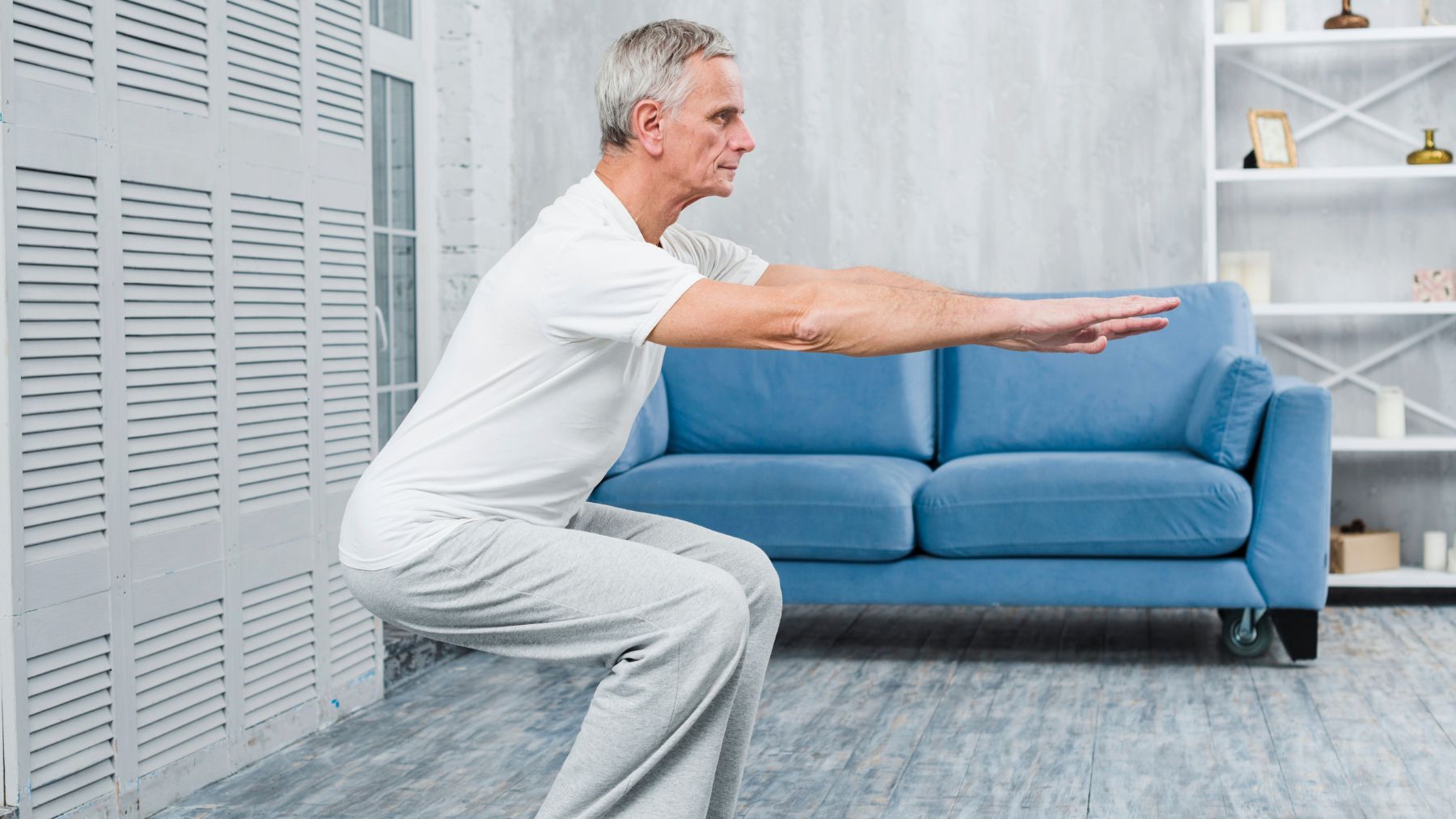Squats are one of the most popular exercises for toning legs, glutes, and core, yet many people do them incorrectly. For adults over 50, proper form is crucial to avoid injuries while still building muscle.
Experts say the secret isn’t just depth or weight—it’s the pace. Performing squats slowly allows your body to engage more muscles, improve balance, and enhance flexibility. Each movement matters when your goal is long-term strength and mobility.
How to perform squats the right way, according to a fitness pro
Steven Bowers, D.O., a board-certified family physician and author of Secrets of the World’s Healthiest People, explains that slow-tempo squats are the key to effectiveness. “Squats are a fantastic way to tone your legs, glutes, and core muscles all at once,” Bowers said. “They help with balance and flexibility to prevent age-related falls.”
To perform a safe and effective squat:
- Stand with feet hip-distance apart. You can hold a kettlebell or dumbbell at chest level, or just use body weight.
- Keep your chest up and slowly lower your body, pushing your hips back as if sitting into a chair.
- Pause at your lowest position for 3 seconds. Inhale deeply, then exhale as you push back up to the starting position.
- Complete 10 reps, adding 1–2 seconds to the pause each week for progressive improvement.
The slow pace ensures proper form, reduces strain on knees and hips, and maximizes muscle engagement. This is especially important for people over 50, who are more prone to injuries and need careful control to strengthen key muscle groups safely.
Why slow squats improve strength and mobility
When done correctly, squats activate the muscles and joints that support everyday movements, like sitting and standing. This includes:
- Glutes: Build hip strength and improve posture.
- Quadriceps and hamstrings: Strengthen the front and back of the upper legs.
- Ankle, knee, and hip joints: Improve flexibility and reduce the risk of falls.
Using slow-tempo squats as part of a balanced workout can also enhance full-body strength. Pairing squats with exercises that target different movement types ensures all major muscle groups are engaged. This approach prevents focusing only on isolated areas, which may lead to imbalances or weaker joints.
To maximize results:
- Pause at the bottom of each squat and focus on alignment.
- Avoid rushing through reps; quality beats quantity.
- Combine squats with exercises for pulling, pushing, and rotational movements.
- Gradually increase intensity or add weights while maintaining proper form.
For seniors or beginners, slow squats are especially valuable. They build muscle without overloading joints, improve balance, and help maintain mobility for daily activities. Over time, they also enhance core stability, which supports posture and reduces the risk of falls.
Even for experienced fitness enthusiasts, slowing down the tempo can reveal weaknesses or imbalances that faster reps may hide. Paying attention to each movement and holding the squat at its lowest point allows your muscles to work harder and more efficiently.
Incorporating slow-tempo squats into your weekly routine ensures that each session strengthens muscles, supports joint health, and improves balance. Whether your goal is toning, mobility, or injury prevention, slowing down transforms a standard exercise into a full-body strength builder that works for all ages.

